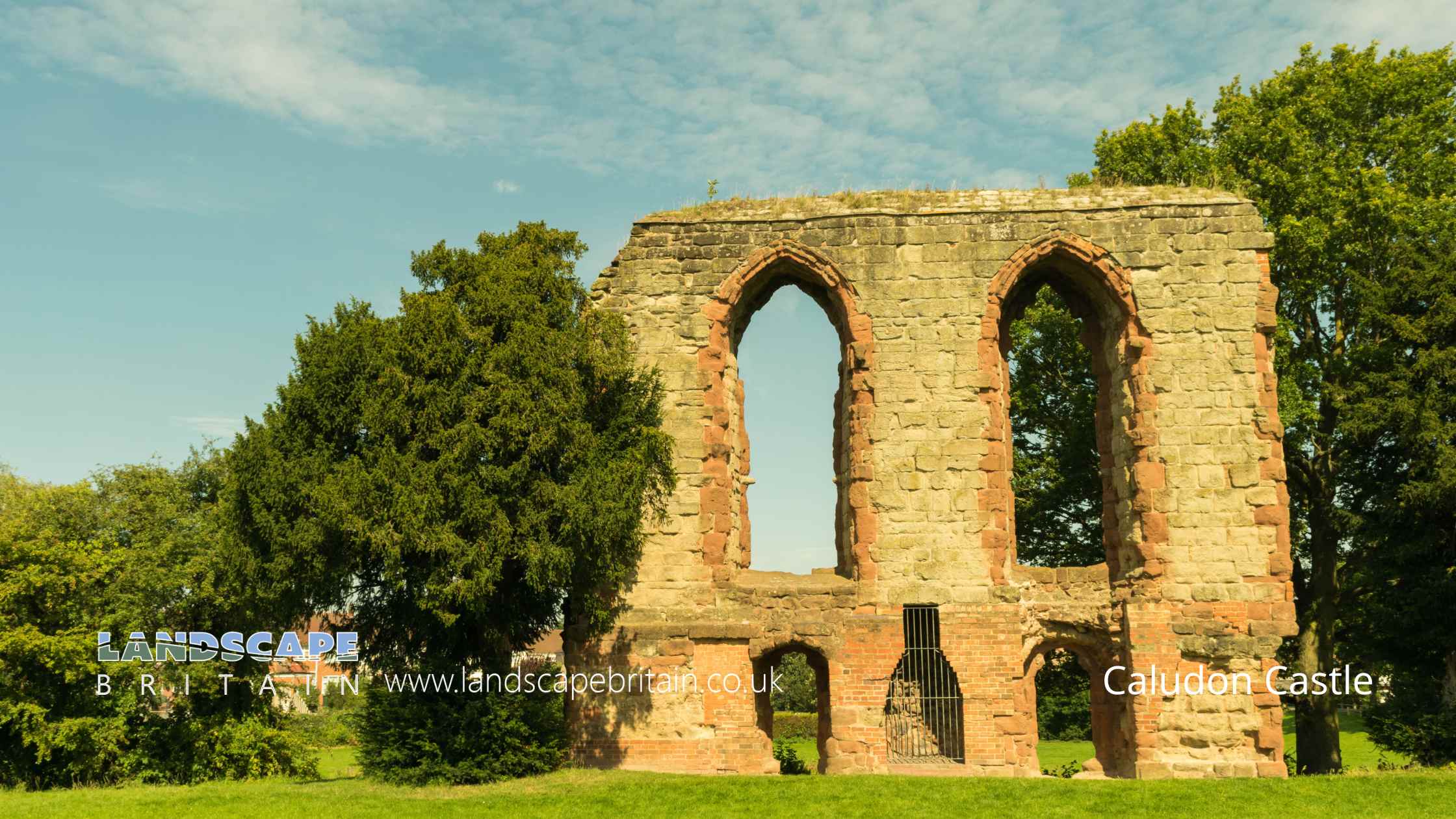
Caluden Castle (ruin) by wael alreweie from Getty Images
Caluden Castle (ruin)
Caludon Castle, located within Caludon Castle Park in Coventry, is a site of significant historical importance and is recognised as a Grade I Scheduled Ancient Monument. The origins of the castle date back to at least circa 1354, though it may have existed even earlier. The history of Caludon Castle is rich and intricate, reflecting the tumultuous periods it has survived through.
The castle’s historical prominence began when John Segrave was granted a licence to crenellate in 1305. This licence permitted him to fortify his manor house, marking the beginning of the castle’s fortified history. A second licence was granted in 1354, further cementing its status as a significant fortified structure of the time.
Caludon Castle eventually descended into the possession of Thomas Mowbray, Duke of Norfolk. However, following his banishment in 1398, the castle fell into a state of dereliction. It remained in ruins until around 1580, when Henry Lord Berkeley undertook a significant rebuilding effort. Despite these efforts, the castle once again fell into disrepair by the late 17th century, leaving only fragments of its former glory.
Today, the sole remaining fragment of Caludon Castle consists of a tall sandstone wall. This wall features two large pointed arched windows situated above two smaller windows, showcasing remnants of stone window tracery that hint at the castle’s medieval grandeur. These architectural features provide a fascinating glimpse into the Gothic style that was prevalent during the castle’s heyday.
As a Grade I Scheduled Ancient Monument, Caludon Castle is recognised for its exceptional historical and architectural significance. This designation ensures that the site is protected by law and highlights its importance as a piece of the national heritage. The preservation of this site allows visitors to appreciate the rich history embedded in its ruins, connecting them to the medieval past of Coventry.
In conclusion, Caludon Castle is more than just a historic ruin; it is a testament to the rich tapestry of English history. From its crenellation in the early 14th century to its decline and partial restoration, the castle tells a story of nobility, architectural evolution, and the passage of time. The remaining sandstone wall, with its distinctive windows, stands as a monument to the enduring legacy of Caludon Castle.
Created: 31 May 2024 Edited: 17 September 2024
Caluden Castle (ruin)
Caluden Castle (ruin) LiDAR Map
Contains public sector information licensed under the Open Government Licence v3.0
Local History around Caluden Castle (ruin)
There are some historic monuments around including:
Deserted medieval village at King's HillPit alignments N of Bubbenhall villageStoneleigh BridgeWolston priory and moated siteSite of CharterhouseBrandon CastleBaginton Castle, associated settlement remains, ponds and mill sitesCook Street GateMound S of Combe AbbeyKnightlow Cross and moundErnesford Grange moated site, BinleyRoman fort at The LuntBowl barrow on Lammas HillCoventry city wallsMoated site at Exhall HallMoated site 190m south of Caludon CastlePrehistoric pit alignments and associated features 160m north of The BarbellowsCast iron single-span bridge 110m WNW of Sherbourne HouseSite of Cloister, Chapter House and Undercrofts of Coventry PrioryCaludon Castle: a moated site and part of an associated water management system.





